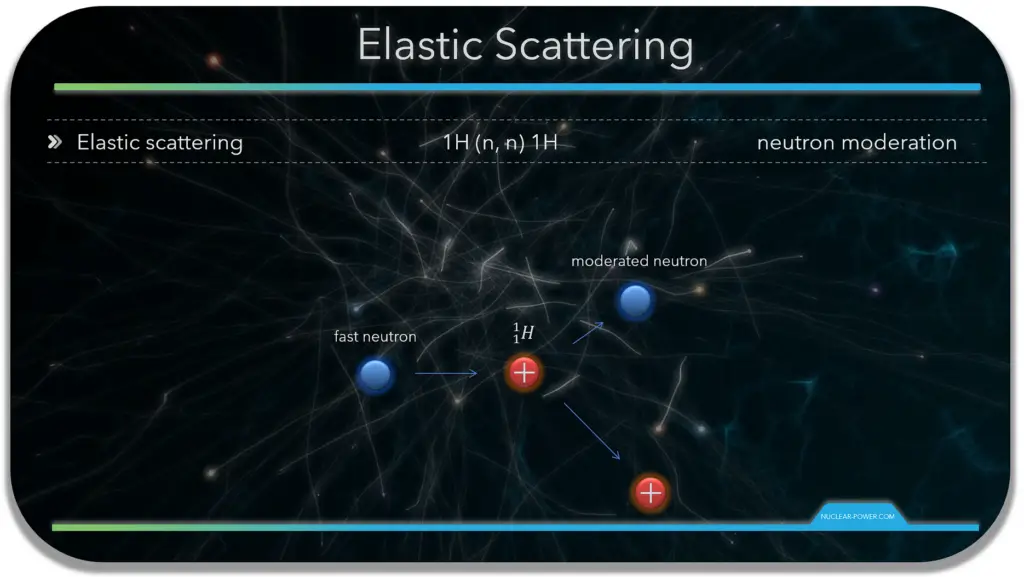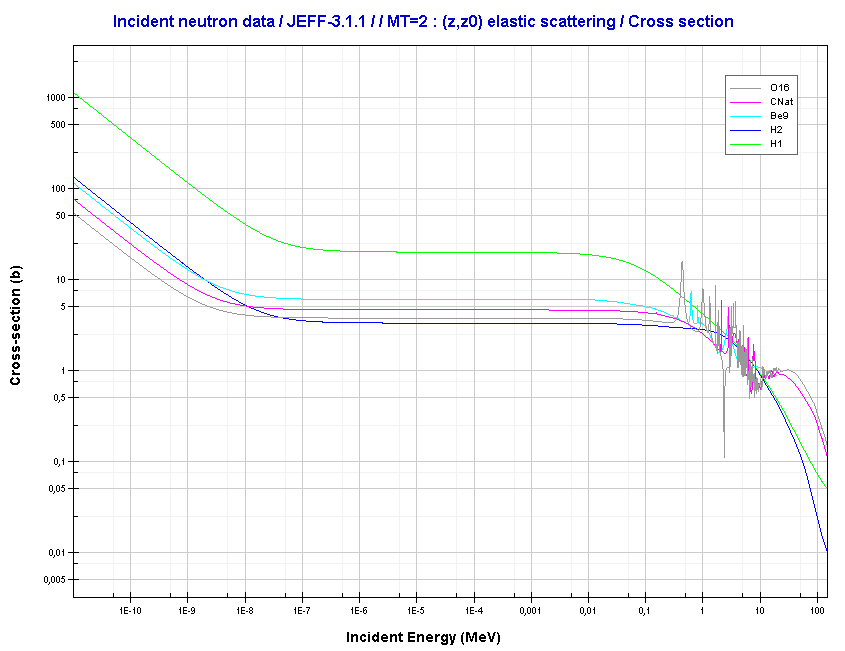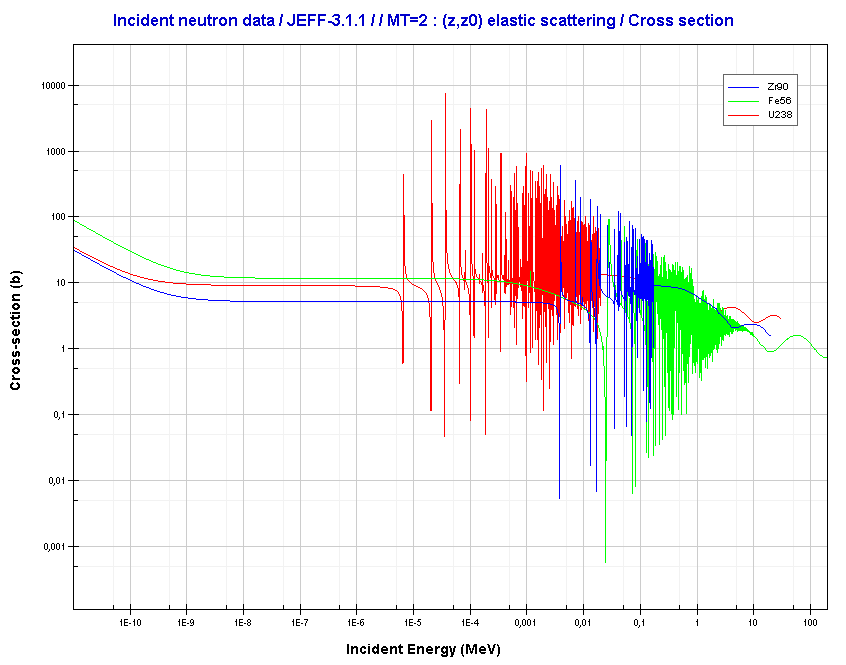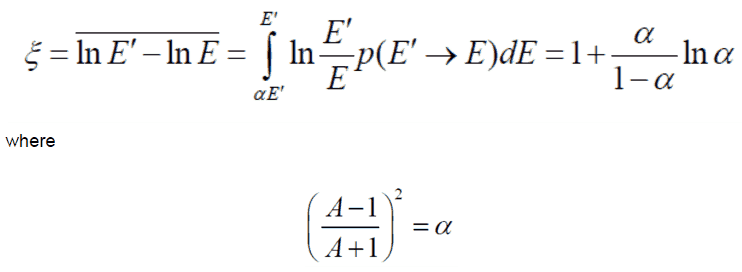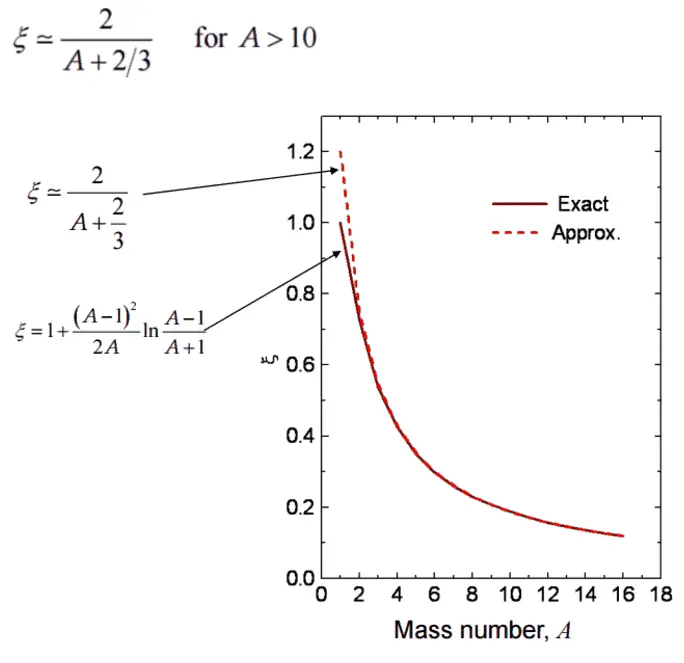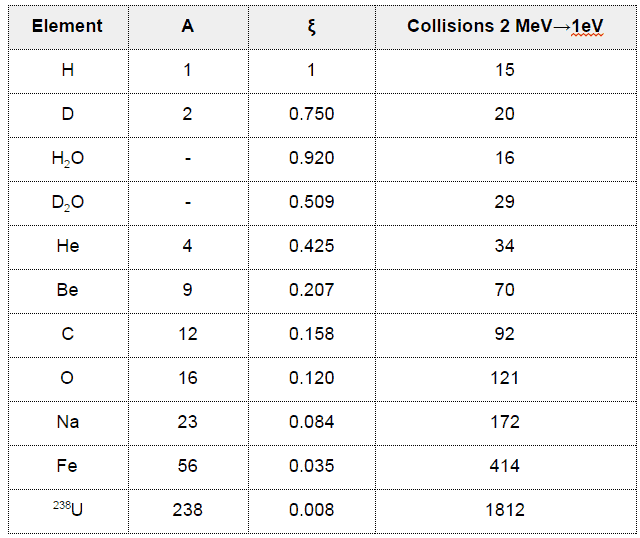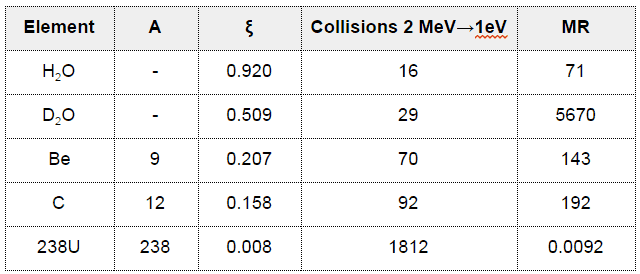The elastic scattering conserves both momentum and kinetic energy of the “system”. It may be modeled as a billiard ball collision between a neutron and a nucleus.
There is usually some transfer of kinetic energy from the incident neutron to the target nucleus. The target nucleus gains the exact amount of kinetic energy that the neutron loses. This interaction can occur via compound nucleus formation, but in the case of elastic scattering, a neutron emission returns the compound nucleus to the ground state of the original nucleus. Therefore the initial and final neutrons do not need to be necessarily the same.
The elastic scattering can occur by way of two interaction mechanisms:
- Potential scattering. In potential scattering, the neutron and the nucleus interact without neutron absorption and a compound nucleus. In fact, the incident neutron does not necessarily have to “touch” the nucleus, and the neutron is scattered by the short-range nuclear forces when it approaches close enough to the nucleus. Potential scattering occurs with incident neutrons that have an energy of up to about 1 MeV. It may be modeled as a billiard ball collision between a neutron and a nucleus.
- Compound-elastic scattering. In some cases, if the kinetic energy of an incident neutron is just right to form a resonance, the neutron may be absorbed, and a compound nucleus may be formed. This interaction is more unusual and is also known as resonance elastic scattering. Due to the formation of the compound nucleus, the initial and final neutron are not the same.
Conservation of momentum and kinetic energy
where:
mn = mass of the neutron
mT = mass of the target nucleus T
vn,i = initial neutron speed
vn,f = final neutron speed
vT,i = initial target speed
vT,f = final target speed
Key Characteristics of Elastic Scattering
- Elastic scattering is the most important process for slowing down neutrons.
- The total kinetic energy of the system is conserved in the elastic scattering.
- In this process, energy lost by the neutron is transferred to the recoiling nucleus.
- Maximum energy transfer occurs with a head-on collision.
- The kinetic energy of the recoiled nucleus depends on the recoiled angle φ of the nucleus.
- Elastic scattering cross-sections for light elements are more or less independent of neutron energy up to 1 MeV.
- For intermediate and heavy elements, the elastic cross-section is constant at low energy with some specifics at higher energy.
- A good approximation is, σs = const, for all elements that are of importance.
- At low energy, σs can be described by the one-level Breit-Wigner formula.
- Nearly all elements have scattering cross-sections in the range of 2 to 20 barns.
- The important exception is for water and heavy water.
- If the kinetic energy of an incident neutron is large compared with the chemical binding energy of the atoms in a molecule, the chemical bound can be ignored.
- If the kinetic energy of an incident neutron is of the order or less than the chemical binding energy, the cross-section of the molecule is not equal to the sum of cross-sections of its individual nuclei.
- The scattering of slow neutrons by molecules is greater than by free nuclei.
- Therefore one nucleus microscopic cross-section does not describe the process correctly, while the macroscopic cross-section (Σs) has a precise meaning.
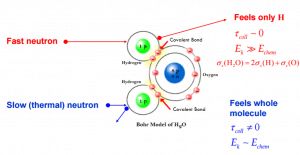 The scattering of slow neutrons by molecules is greater than by free nuclei.
The scattering of slow neutrons by molecules is greater than by free nuclei.
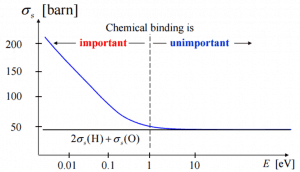
If the kinetic energy of an incident neutron is of the order or less than the chemical binding energy, the cross-section of the molecule is not equal to the sum of cross-sections of its individual nuclei.
Elastic Scattering Cross-section
To be an effective moderator, the probability of elastic reaction between neutron and the nucleus must be high. In terms of cross-sections, the elastic scattering cross-section of a moderator’s nucleus must be high.
Elastic scattering cross-sections for light elements are more or less independent of neutron energy up to 1 MeV.
Source: JANIS (Java-based Nuclear Data Information Software); The JEFF-3.1.1 Nuclear Data Library
For intermediate and heavy elements, the elastic cross-section is constant at low energy with some specifics at higher energy.
Source: JANIS (Java-based Nuclear Data Information Software); The JEFF-3.1.1 Nuclear Data Library
Elastic Scattering and Neutron Moderators
As can be seen, a high elastic scattering cross-section is important but does not comprehensively describe moderators’ capabilities. To describe the capabilities of a material to slow down neutrons, three new material variables must be defined:
- The Average Logarithmic Energy Decrement (ξ)
- The Macroscopic Slowing Down Power (MSDP)
- The Moderating Ratio (MR)
Key properties of neutron moderators:
- the high cross-section for neutron scattering
- high energy loss per collision
- the low cross-section for absorption
- high melting and boiling point
- high thermal conductivity
- high specific heat capacity
- low viscosity
- low activity
- low corrosive
- cheap
